Solar Cells and Solar Panels
Solar Cells and Panels, a Clean and Efficient Way To Harness Unlimited Power
[ad] Empty ad slot (#1)!
A solar cell is a thin wafer of semiconducting material (usually silicone) covered by a protective glass layer that collects the solar radiation in sunlight and transfers it into electricity through a process called “photovoltaics.” This electricity is channeled into a battery that stores the energy for use. The energy comes through as a direct current, and since modern power usage demands an alternating current, a device called an “inverter” transfers the energy into a usable, alternating form. In order to receive the maximum amount of power from the sun, solar cells are grouped together to form a solar panel. Several solar panels grouped together form an energy collecting source adequate to meet the needs of a home or business. While most uses of solar panels involve being placed on and around structures, some power plants are specifically created with dozens, if not hundreds, of solar panels converting sunlight into power for the nearby area through the photovoltaic process.
The Other Common Method of Harnessing the Sun
An alternate method of collecting solar power involves the use of large mirrors and focusing lenses. The lenses focus and amplify the heat of the sun onto heat powered motors (such as a steam engine) to run turbines that generate electrical power. This form of energy collection is called “concentrated solar power” and will often include sophisticated set-ups that allow mirrors and lenses to track the movement of the sun across the sky to achieve maximum results.
Advancements In Modern Science
The conductive nature of a solar cell is constantly being refined in order to allow for greater collection of solar radiation. New composite materials are being developed that convert energy more efficiently then the commonly used silicone. Using the principles behind concentrated solar power, manufacturers have been using “concentrator modules” to focus more light on a photovoltaic cell that allows for greater radiation absorption. Solar panels that are mounted on movable supports can be programmed to follow the sun throughout the day to absorb as much energy as possible. Due to the greater demand for solar power, manufacturing techniques have been refined which–in turn–allows for a greater supply of solar cells at lower prices.
Solar Power For Industrial Use
Since the rise of industrial nations, pollution has been a common complaint as images of towers belching out smoke and waste being poured into rivers is a cliched, but perhaps accurate, vision of the results of mass production. In recent decades, the industrial sectors have become increasingly pressured to “go green” and find ways to avoid further harm to the environment and atmosphere. With the advent of alternative energy sources, such as solar power, industrial companies can start powering more and more operations with minimal impact on the economy.
Solar Power For the Home
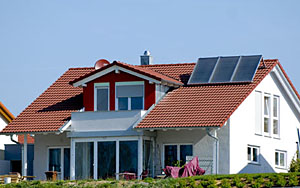 While those using solar power for personal home use is still a distinct minority, the numbers are increasing as more and more people see the benefits of installing solar panels.
While those using solar power for personal home use is still a distinct minority, the numbers are increasing as more and more people see the benefits of installing solar panels.
A homeowner wishing to install a solar power system must ensure the right amount of power will be generated. Homeowners need to take inventory of how much energy in kilowatts is used, on average, in any given month. Many companies will offer evaluations of a home to determine what kind of solar panels will be necessary based both on home energy usage, as well as how much sunlight is typically available for the home. Manufacturers typically charge by the watt (for example, a particular solar panel may create 40 watts of energy per hour), and wattage charges can be as low as a couple of dollars per watt, to over ten dollars per watt. This can be largely contingent upon how much of the installation is done by the company providing the system. With all the supplies and labor, covering a house can cost anywhere from $15,000-$40,000.
For many homeowners the cost seems daunting and several factors must be considered. The first consideration is that once the system is installed the cost portion is over and monthly energy bills become a thing of the past. Solar panels require very little maintenance and can be used for thirty years or more due to the fact that there are no moving parts involved. The amount of savings over than thirty years ensures that a solar energy system will pay for itself many times over during its lifespan. In addition, several countries and states offer incentive programs in the form of tax deductions and other monetary compensations; this can make the initial cost much easier to handle. In addition, the cost of traditionally energy sources will only go up over the next several decades as non-renewable sources of energy continue to dwindle. The value of a home can also skyrocket with the addition of a solar energy system, which makes the installation of such a system a valuable investment.
For those who are unsure about the cost or effectiveness of a solar system, smaller systems are available that will serve to supplement existing power supplies. This is still a cost-effective measure of cutting down on energy bills; if satisfied with the results, a homeowner can convert the rest of the house to a solar panel system as well.
Solar Power For the Home Continued (The Parts)
A home solar energy system requires several components. The first is, obviously, the solar cells and solar panels that house them. A grid-tie system combines the output of the solar panels and ties them into the existing home power connections. An inverter is a box that makes solar energy usable. As mentioned previously, energy collected by solar cells is in the form of a direct current and household power requires an alternating electrical current. An inverter converts the direct current into a usable alternating current. A battery stores the electricity generated and keeps it stored until it is used. This also helps to maintain power levels when direct sunlight is not available (such as at night or during rain).
The Advantages and Disadvantages Of Solar Energy In the Home
The advantages of using solar power are substantial. Becoming energy independent frees up monthly finances from recurring gas and electricity bills. Homeowners give a helping hand to the environment, as the sun is an inexhaustible source of power and no harmful byproducts are created by solar energy generation. A solar energy system operates quietly, which provides serenity and a peace of mind that is all-too uncommon in modern society.
The main disadvantage to using solar energy is the initial cost. Many homeowners simply cannot afford (or don’t think they can afford) the initial investment in a system. However, with government incentive programs, and the thought of paying off the cost of the initial investment several times over during the lifespan of the solar panels, many homeowners find they can devise a way to pay for, or finance, a solar power system.
[ad] Empty ad slot (#1)!
Solar Cells and Panels, a Clean and Efficient Way To Harness Unlimited Power | The Other Common Method of Harnessing the Sun | Advancements In Modern Science | Solar Power For Industrial Use | Solar Power For the Home | Solar Power For the Home Continued (The Parts) | The Advantages and Disadvantages Of Solar Energy In the Home
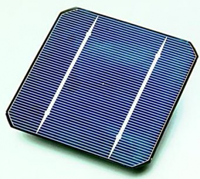
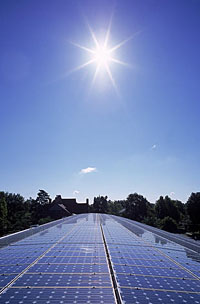 Usage of Solar Energy
Usage of Solar Energy Solar Plants
Solar Plants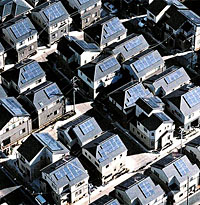 Solar panels for homes
Solar panels for homes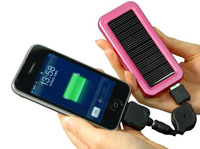 Portable Solar Charger
Portable Solar Charger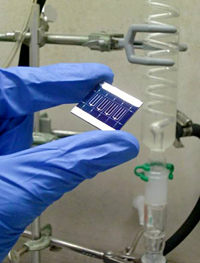 Mini Solar Cell
Mini Solar Cell